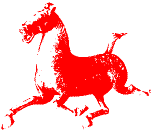
 |
||||||||||||
| malay concordance project | ||||||||||||
| home | about | papers | blogs | searching | texts | direct search | ||||||
Similes expressing female beauty in Syair Bidasari
Similes are used in Malay language frequently, in traditional or even in its modern language, particularly in syair because bersyair, meaning to recite a poem, is part of Malay tradition. Like in other languages, similes in traditional Malay are also inspired by some characteristics of flowers, plants, animals or nature. This essay will focus on some selected similes used in the Sya’ir Bidasari that relate to the physical beauty of women as represented by Bidasari’s beauty. (See full Malay text in appendix).
Rupanya seperti bidadari Indera
Literally meaning: Her beauty is like the beauty of a fairy from a fairyland.
Note: the beauty of a fairy usually cannot be described in detail because it seems magical. This simile expresses the general idea about her beauty; the detail is in later expressions.Dahinya seperti sehari bulan (32:5)
Literally meaning: her forehead is similar to the new moon.
Meaning: her forehead is very narrow and in a lovely shape.
Note: the moon at its first day is so small, smaller than a crescent, and has a particular shape which is thought like forehead of a woman.Kulitnya seperti cempaka wilis (33:1)
Literally meaning: her skin is as soft as the blue Michellia Champacca flower.
Meaning: her skin is very soft.
Note: Cempaka Wilis is a type of flower which is very soft.Pipinya bagai pauh di layang (33:2)
Literally meaning: her cheeks are like the cut mango in half.
Meaning: her cheeks are very smooth and round.
Note: this simile is a very popular simile in describing women’s cheeks.Bahunya seperti bahu wayang (33:2)
Literally meaning: her shoulders are similar to the shoulders of wayang (Javanese puppet).
Meaning: her shoulders are small and round.Hidungnya seperti kuntum melur (33:3)
Literally meaning: her nose has a shape of a jasmine bud.
Meaning: her nose is a sharp and well-formed nose.Wajahnya laksana kuning telur (33:3)
Literally meaning: her face is like the egg yolk.
Meaning: her face is round and lovely.Bibirnya seperti pati dicarik (33:4)
Literally meaning: her lips are shaped like the engraved starch.
Meaning: her lips are lovely and full.
Note: full lips are thought to be sensualLehernya laksana kambeh dilarik (33:4)
Literally meaning: her neck is like the engraved gourd
Meaning: her neck is long and smooth
Giginya seperti delima merekah (33:5)
Literally meaning: her teeth are structured like a ripe pomegranate.
Meaning: her teeth are white, small and well structured.
Note: this simile is also used popularly for lips: bibirnya seperti delima merekah, means her lips are full and lovely.Susunya seperti telur kepudang (33:6)
Literally meaning: her breast has the shape of oriole’s eggs.
Meaning: her breast is lovely elliptical and full.Pahanya seperti paha belalang (34:1)
Literally meaning: her thighs are similar to locust thighs.
Meaning: her thighs are small and long.Betisnya seperti bunting padi (34:2)
Literally meaning: her calf has a shape of a fully formed ear of rice.
Meaning: She has a shapely calf.Tumit seperti telur hayam (34:3)
Literally meaning: her ankles have a shape of chicken egg.
Meaning: even her ankles are beautiful.Duri landak rupanya jari (34:4)
Literally meaning: prickle of porcupine are the shape of her fingers.
Meaning: her fingers are long and have very nice shapes.
Note: The shape of duri landak is long and small in the edge.
These similes show the "ideal" and typical of women’s beauty in archipelago at that time, and Bidasari represents that ideal.
Conclusion
These similes are interesting points of traditional Malay because the ideal of women’s beauty in modern life is likely to change.
Appendix
(taken from Sya’ir Bidasari, ed. Munawar, pp.26-27)
Ialah ada seorang putera
Parasnya elok tiada bertara
Rupanya seperti bidadari Indera
Seperti madu tambak segara
Sekalianlah gerangan bidadari
Seorang tak banding dalam negeri
Lakunya patut bijak bestari
Namanya Sitilah Bidasari (32:1)
Jikalau ditentang paduka kakanda
Menjadi apa gerangan baginda
Anak diambil akan isteri muda
Sehabis kasih di dalam dada (32:2)
Kecil molek sedang rumaja
Manis lakunya bersaja-saja
Seperti awan mengandung teja
Saudagar laki istri sangat permanja (32:3)
Rambutnya ikal mayang mekar
Serupa itu dicari sukar
Sungguhpun ia anak saudagar
Dengan anak menteri tiada tertukar (32:4)
Dahinya seperti sehari bulan
Laksana cincin ikatan Selan
Jikalau tuanku ambilkan taulan
Manis mengiringi tuanku berjalan (32:5)
………
Ekor matanya mengerling manis
Senyumnya patut dengan memalis
Kulitnya seperti cempaka wilis
Laksana gambar baharu ditulis (33:1)
Pipinya bagai pauh dilayang
Bahunya seperti bahu wayang
Lehernya suka ditentang dayang
Pinang dimakan berbayang-bayang (33:2)
Hidungnya seperti kuntum melur
Wajanya laksana kuning telur
Putih sifatnya warna habelur
Berpatutan sanggul mayang mengekor (33:3)
Bibirnya seperti pati dicarik
Lehernya laksana kambeh dilarik
Berpatutan sunting bunga anggerik
Demikinlah bertambah rupanya baik (33:4)
Giginya seperti delima merekah
Serta terpandang hari terbuka
Jika sepuluh hati yang duka
Terpandang dia menjadi suka (33:5)
Pinggangnya ramping dadanya bidang
Susunya seperti telur kepudang
Sangatlah suka patik memandang
Seperti putri di Gunung Ledang (33:6)
Pahanya seperti paha belalang
Laksana manikam di dalam balang
Permainya bukan alang kepalang
Barang yang memandang rasanya walang (34:1)
Betisnya seperti bunting padi
Sempurnalah bahasany dengan budi
Kasih dan saying serta sudi
Parasnya laksana nila kendi (34:2)
Tumit seperi telur hayam
Seperti putrid dibenua Siam
Patutlah ia sini diam
Menghadapi tuanku tatkala semayam (34:3)
Duri landak serupanya jari
Patutlah dengan canggainya kiri
Sungguhpun abanyak anak para mentri
Tak sama Siti Bidasari (34:4)
References
Braginsky, V.I. (1994). Erti Keindahan dan Keindahan Erti dalam Kesusasteraan Melayu Klasik. Dewan Bahasa dan Pustaka : Kuala Lumpur.
Echols, John, M. and Sadili, Hassan. (1997). Kamus Indonesia Inggris (An Indonesian-English Dictionary). Jakarta : PT. Gramedia.
Iskandar, Teuku, Dr. (1984). Kamus Dewan, Kuala Lumpur : Dewan Bahasa dan Pustaka.
Munawar, Tuti. (1978). Syair Bidasari. Jakarta: Departemen Pendidikan dan Kebudayaan Proyek Penerbitan Buku Bacaan dan Sastra.
Winstedt, R.O. (1960). Kamus Bahasa Melayu, Singapore and Kuala Lumpur : Marican & Sons.
| top |